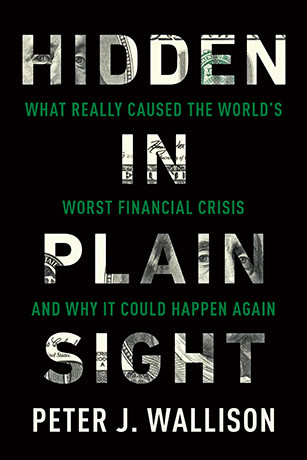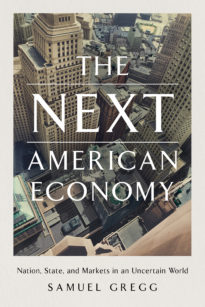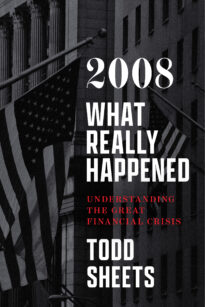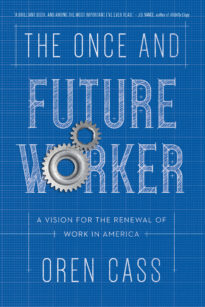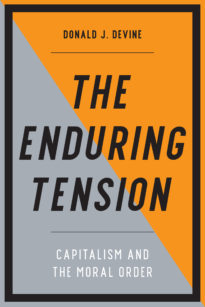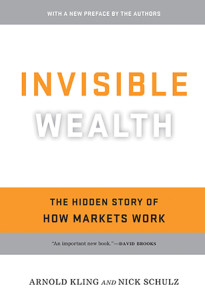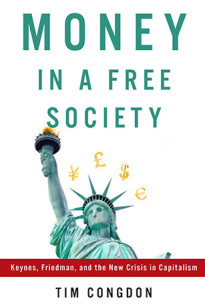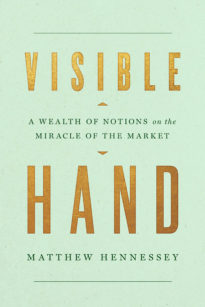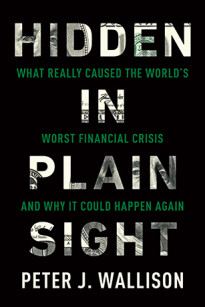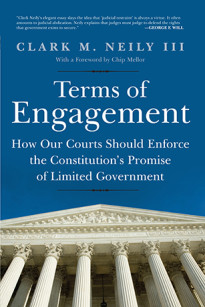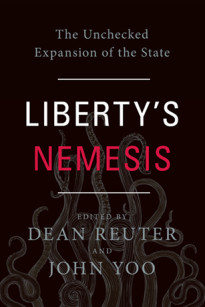In their second 2008 presidential debate, almost three weeks after Lehman Brothers had filed for bankruptcy, John McCain and Barack Obama laid out sharply divergent views of the causes of the financial convulsion that was then dominating the public’s concerns.
The debate was in a town-hall format, and a member of the audience named Oliver Clark asked a question that was undoubtedly on the mind of every viewer that night:
Clark: Well, Senators, through this economic crisis, most of the people that I know have had a difficult time. . . . I was wondering what it is that’s going to actually help these people out?
Senator McCain: Well, thank you, Oliver, that’s an excellent question. . . . But you know, one of the real catalysts, really the match that lit this fire, was Fannie Mae and Freddie Mac . . . they’re the ones that, with the encouragement of Sen. Obama and his cronies and his friends in Washington, that went out and made all these risky loans, gave them to people who could never afford to pay back . . .
Then it was Obama’s turn.
Senator Obama: Let’s, first of all, understand that the biggest problem in this whole process was the deregulation of the financial system. . . . Senator McCain, as recently as March, bragged about the fact that he is a deregulator. . . . A year ago, I went to Wall Street and said we’ve got to reregulate, and nothing happened. And Senator McCain dur-ing that period said that we should keep on deregulating because that’s how the free enterprise system works.
Although neither candidate answered the question that Oliver Clark had asked, their exchange, with remarkable economy, effectively framed the issues both in 2008 and today: was the financial crisis the result of government action, as John McCain contended, or of insufficient regulation, as Barack Obama claimed?
Since this debate, the stage has belonged to Obama and the Democrats and their narrative about the causes of the financial crisis was adopted by the media and embedded in the popular mind. Dozens of books, television documentaries, and films have told the easy story of greed on Wall Street or excessive and uncontrolled risk-taking by the private sector—the expected result of what the media has caricatured as “laissez-faire capitalism.” To the extent that government has been blamed for the crisis, it has been for failing to halt the abuses of the private sector.
The inevitable outcome of this perspective was the Dodd-Frank Wall Street Reform and Consumer Protection Act, by far the most costly and restrictive regulatory legislation since the New Deal. Its regulatory controls and the uncertainties they engendered helped produce the slowest post-recession U.S. recovery in modern history.
As long as the financial crisis is seen in this light—as the result of insufficient regulation of the private sector—there will be no end to the pressure from the left for further and more stringent regulation. Proposals to break up the largest banks, reinstate Glass-Steagall in its original form, and resume government support for subprime mortgage loans are circulating in Congress. These ideas are likely to find public support as long as the prevailing view of the financial crisis is that it was caused by the risk-taking and greed of the private sector.
For that reason, the question of what caused the financial crisis is still very relevant today. If the crisis were the result of government policies, as described in this book, the Dodd-Frank Act was an illegitimate response to the crisis and many of its unnecessary and damaging restrictions should be repealed. Similarly, proposals and regulations based on a false narrative about the causes of the financial crisis should also be seen as misplaced and unfounded.
First impressions are never a sound basis for policy action, and haste in passing significant legislation can have painful consequences. During the Depression era, it was widely believed that the extreme level of unemployment was caused by excessive competition. This, it was thought, drove down prices and wages and forced companies out of business, causing the loss of jobs. Accordingly, some of the most far-reaching and hastily adopted legislation—such as the National Industrial Recovery Act and the Agricultural Adjustment Act (both ultimately declared unconstitutional)—was designed to protect competitors from price competition. Raising prices in the midst of a depression seems wildly misguided now, but it was a result of a mistaken view about what caused the high levels of unemployment that characterized the era.
Hidden in Plain Sight is intended to be an entry in the political debate—a debate that was framed in the 2008 presidential contest but never actually joined. In these pages I argue that, but for the housing policies of the U.S. government during the Clinton and George W. Bush administrations, there would not have been a financial crisis in 2008. I do not absolve the private sector, but put the errors of the private sector in the context of the government policies that dominated the housing finance market for the fifteen years before the crisis and the government regulations that induced banks to load up on assets that ultimately proved to be toxic. The future of the housing finance system and the health of the wider economy depend on a public that is fully informed about the causes of the 2008 financial crisis.
